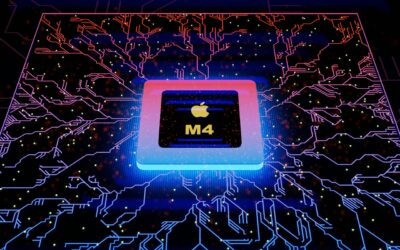In the rapidly evolving landscape of business technology, the No-Stack approach emerges as a revolutionary paradigm shift. Unlike traditional methods that rely on a complex web of applications and integrations, the No-Stack model simplifies operations by consolidating various functionalities into a single, cohesive platform. This innovative strategy is exemplified by SMS-iT, the world’s first No-Stack Agentic AI Platform.
By unifying CRM, ERP, and over 60 microservices, SMS-iT eliminates the need for outdated stacks and fragmented applications, allowing businesses to operate more efficiently and effectively. The essence of the No-Stack approach lies in its ability to streamline processes and reduce the burden of managing multiple tools. Businesses often find themselves overwhelmed by the sheer number of applications they must juggle, leading to inefficiencies and wasted resources.
With SMS-iT, organizations can automate, optimize, and scale every aspect of their operations without the hassle of integrating disparate systems. This not only saves time but also empowers entrepreneurs to focus on what truly matters: growing their business and serving their customers.
Key Takeaways
- No-Stack approach emphasizes using minimal technology tools and platforms
- Simplicity in technology reduces cognitive load and decision fatigue
- No-Stack enhances focus by eliminating distractions and unnecessary options
- Minimalism in tech stack leads to increased productivity and efficiency
- Implementing No-Stack approach can boost creativity and innovation in work and life
The Psychology of Simplicity
Simplicity is not just a design principle; it’s a powerful psychological concept that can significantly influence decision-making and productivity. When faced with an overwhelming number of choices or complex systems, individuals often experience decision fatigue, leading to procrastination or poor choices. The No-Stack approach, as embodied by SMS-iT, leverages this understanding by providing a straightforward solution that minimizes complexity and maximizes clarity.
By reducing the cognitive load associated with managing multiple applications, SMS-iT allows users to make decisions more confidently and quickly. The intuitive interface and seamless integration of various functionalities mean that users can focus on their core tasks without getting bogged down by technicalities. This psychological shift towards simplicity fosters a more productive work environment, where creativity and innovation can flourish without the constraints of cumbersome technology.
How No-Stack Enhances Focus
In today’s fast-paced business world, maintaining focus is more critical than ever. The No-Stack approach enhances focus by eliminating distractions that arise from managing multiple tools and platforms. With SMS-iT, businesses can centralize their operations, allowing team members to concentrate on their specific roles without the constant interruption of switching between applications.
This streamlined workflow not only boosts individual productivity but also fosters better collaboration among team members. Moreover, the clarity provided by a unified platform like SMS-iT enables teams to align their goals and objectives more effectively. When everyone is working within the same ecosystem, communication becomes more straightforward, and misunderstandings are minimized.
This enhanced focus on shared goals leads to improved outcomes and a more cohesive team dynamic, ultimately driving business success.
The Impact of No-Stack on Productivity
The impact of the No-Stack approach on productivity cannot be overstated. By consolidating various business functions into a single platform, SMS-iT empowers organizations to operate at peak efficiency. Tasks that once required hours of manual effort can now be automated with just a few clicks, freeing up valuable time for employees to engage in higher-value activities.
This shift not only enhances individual productivity but also contributes to overall organizational performance. Furthermore, the ability to access real-time data and insights through SMS-iT allows businesses to make informed decisions quickly. With all relevant information at their fingertips, teams can respond to market changes and customer needs with agility and precision.
This proactive approach to productivity ensures that businesses remain competitive in an ever-changing landscape, ultimately leading to sustainable growth and success.
The Science Behind Minimalism
Minimalism is more than just a lifestyle choice; it’s a philosophy rooted in the science of human behavior and cognitive function. Research has shown that reducing clutter—both physical and digital—can lead to improved mental clarity and focus. The No-Stack approach aligns perfectly with this principle by advocating for a streamlined technology ecosystem that minimizes distractions and enhances user experience.
By adopting a minimalist mindset through SMS-iT, businesses can create an environment conducive to creativity and innovation. When employees are not overwhelmed by unnecessary tools or information, they can think more clearly and generate fresh ideas. This scientific understanding of minimalism underscores the importance of embracing the No-Stack approach as a means to foster a culture of creativity within organizations.
Simplifying Your Tech Stack
Simplifying your tech stack is essential for any business looking to thrive in today’s digital age. The traditional approach of piecing together various applications often leads to inefficiencies and increased costs due to maintenance and integration challenges. By adopting the No-Stack model with SMS-iT, organizations can eliminate these pain points and create a more agile and responsive operational framework.
Transitioning to a simplified tech stack involves evaluating existing tools and identifying redundancies or overlaps in functionality. SMS-iT provides a comprehensive solution that encompasses CRM, ERP, and numerous microservices, allowing businesses to replace multiple applications with one intelligent platform. This consolidation not only reduces costs but also streamlines workflows, enabling teams to work more collaboratively and efficiently.
The Role of No-Stack in Decision Making
Effective decision-making is crucial for any organization’s success, and the No-Stack approach plays a vital role in facilitating this process. With SMS-iT’s unified platform, businesses gain access to real-time data analytics and insights that inform strategic decisions. This data-driven approach empowers leaders to make informed choices based on accurate information rather than relying on gut feelings or outdated reports.
Moreover, the clarity provided by a simplified tech stack allows decision-makers to focus on what truly matters—aligning their strategies with organizational goals. By reducing the noise associated with managing multiple tools, SMS-iT enables leaders to prioritize initiatives that drive growth and innovation. This strategic focus ultimately leads to better outcomes for the business as a whole.
No-Stack and Cognitive Load
Cognitive load refers to the mental effort required to process information and make decisions. In a world filled with distractions and complexities, managing cognitive load is essential for maintaining productivity and creativity. The No-Stack approach significantly reduces cognitive load by providing a streamlined platform that integrates various functionalities into one cohesive system.
With SMS-iT, users can access all necessary tools and information without the mental burden of navigating multiple applications. This reduction in cognitive load allows employees to focus on their tasks without feeling overwhelmed or distracted. As a result, organizations can foster an environment where creativity thrives, leading to innovative solutions and improved business outcomes.
The Connection Between No-Stack and Creativity
Creativity is often stifled by complexity and distractions. The No-Stack approach nurtures creativity by providing a simplified framework that allows individuals to think freely without being bogged down by cumbersome technology. With SMS-iT’s unified platform, employees can access the tools they need without navigating through layers of applications or dealing with integration issues.
This freedom from complexity encourages innovative thinking and problem-solving. When employees are empowered to explore new ideas without the constraints of outdated systems, they are more likely to contribute creative solutions that drive business success. By embracing the No-Stack model, organizations can cultivate a culture of creativity that propels them forward in an increasingly competitive landscape.
Implementing No-Stack in Your Work and Life
Implementing the No-Stack approach in both work and life requires a commitment to simplifying processes and embracing efficiency. For businesses, this means adopting platforms like SMS-iT that consolidate various functions into one intelligent ecosystem. By doing so, organizations can streamline operations, reduce costs, and enhance productivity across all levels.
On a personal level, individuals can apply the principles of the No-Stack approach by evaluating their own tech usage and identifying areas for simplification. This might involve consolidating apps or tools used for personal projects or even decluttering digital spaces like email inboxes or file storage systems. By embracing simplicity in both work and life, individuals can create an environment that fosters focus, creativity, and overall well-being.
The Future of No-Stack: Trends and Innovations
As technology continues to evolve at an unprecedented pace, the future of the No-Stack approach looks promising. Innovations in artificial intelligence, machine learning, and automation are set to further enhance the capabilities of platforms like SMS-iT. These advancements will enable businesses to automate even more complex processes while maintaining simplicity at their core.
Moreover, as organizations increasingly recognize the value of streamlined operations, we can expect a growing trend towards adopting No-Stack solutions across various industries. The demand for integrated platforms that reduce complexity will drive innovation in this space, leading to new features and functionalities that empower businesses to thrive in an ever-changing landscape. In conclusion, embracing the No-Stack approach through platforms like SMS-iT offers businesses an opportunity to simplify their operations while enhancing productivity and creativity.
By reducing cognitive load and fostering focus, organizations can navigate the complexities of modern business with ease. As we look towards the future, it’s clear that the No-Stack model will play a pivotal role in shaping how businesses operate—making it easier than ever for entrepreneurs to achieve results once thought possible only for large enterprises. Ready to experience the benefits of the No-Stack approach?
Try out SMS-iT’s 7-day free trial at https://www.smsit.ai today!
FAQs
What is No-Stack?
No-Stack refers to a software development approach that focuses on using a single technology stack for all aspects of a project, such as front-end, back-end, and database. This approach aims to simplify the development process and improve focus by reducing the complexity of managing multiple technologies.
How does No-Stack drive focus?
No-Stack drives focus by streamlining the development process and reducing the cognitive load on developers. By using a single technology stack, developers can focus on mastering one set of tools and frameworks, leading to increased productivity and efficiency.
What are the benefits of using a No-Stack approach?
Some benefits of using a No-Stack approach include simplified development and maintenance, reduced learning curve for new team members, improved consistency and cohesion in the codebase, and easier debugging and troubleshooting. Additionally, No-Stack can lead to faster development cycles and reduced time-to-market for products.
Are there any drawbacks to using a No-Stack approach?
While No-Stack can offer many benefits, it may not be suitable for every project or organization. Some potential drawbacks include limitations in flexibility and scalability, as well as the risk of being locked into a specific technology stack. Additionally, some developers may prefer the diversity and choice offered by a multi-stack approach.









